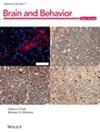Towards Clinical Diagnoses: Classifying Alzheimer's Disease Using Single fMRI, Small Datasets, and Transfer Learning
Abstract
Purpose
Deep learning and functional magnetic resonance imaging (fMRI) are two unique methodologies that can be combined to diagnose Alzheimer's disease (AD). Multiple studies have harnessed these methods to diagnose AD with high accuracy. However, there are difficulties in adapting this research to real-world diagnoses. For example, the two key issues of data availability and model usability limit clinical applications. These two areas are concerned with problems of accessibility, generalizability, and methodology that may limit model adoption. For example, fMRI deep learning models require a large amount of training data, which is not widely available. Contemporary models are also not typically formatted for clinical data or created for use by non-specialized populations. In this study, we develop a deep-learning fMRI pipeline that addresses some of these issues.
Method
We use transfer learning to address problems with data availability. We also use semi-automated and single-image techniques (i.e., one fMRI volume per participant) to make a model that is usable for non-specialized populations. Our model was initially trained on 524 participants from the Autism Brain Imaging Data Exchange (ABIDE; Autism and controls). Our model was then transferred and fine-tuned to a small sample of 64 participants from the Alzheimer's Disease Neuroimaging Initiative (ADNI; AD and controls).
Findings and Conclusion
This transfer learning model achieved an AD classification accuracy of 77% and outperformed the same model without transfer learning by approximately 30%. Accordingly, our model showed that small AD samples can be accurately classified in a clinically friendly manner.


 求助内容:
求助内容: 应助结果提醒方式:
应助结果提醒方式:


